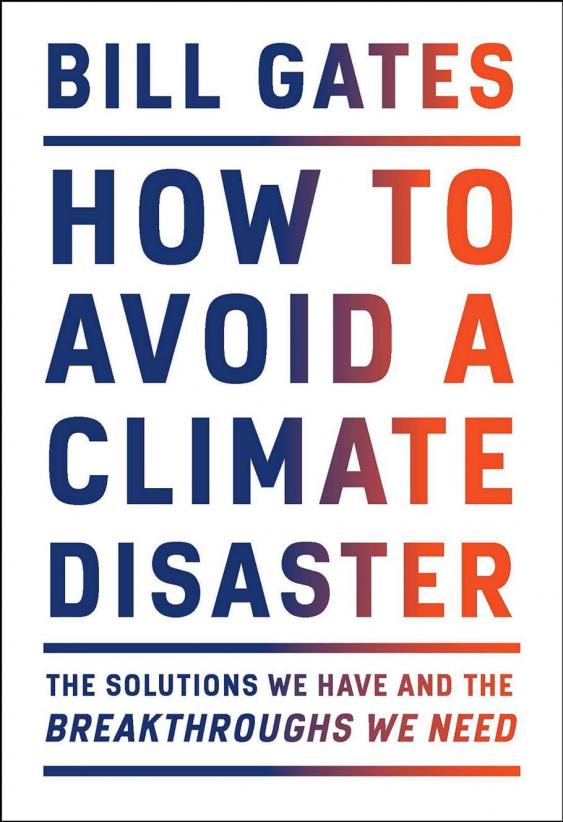
Written by Victoria Zhang, originally published on Medium on September 5, 2021
Tesla is the fastest-growing brand of 2021, with an unprecedented 184 percent increase in brand value, according to a report from the advertising industry. As Tesla, together with other electric vehicles, steadily takes over our roads, those concerned with global warming will naturally hope that transportation will soon cease to be a major culprit for climate change. But this trend will not spread from passenger vehicles to trucks, cargo ships, and airplanes in the near future. I recently read Bill Gates’ new book, How to Avoid a Climate Disaster, and this is one of the many things I learned.

Gates’ book is a comprehensive study of the climate problem including its causes and solutions. According to Gates, we currently produce 51 billion tons of greenhouse gas every year. If it doesn’t get to 0 by 2050, we will face disastrous consequences, just like a bathtub will overflow even if water only drips down slowly from the tap.
Gates divides the greenhouse generation activities into five areas:
- making things
- plugging in
- growing things
- getting around
- keeping warm and cool
and explains how today’s technology can reduce emissions in each area and what breakthroughs are needed. Transportation, or getting around, makes up about 16% of global emissions, ranking fourth behind manufacturing, generating electricity, and farming. We might be on the way to converting all passenger vehicles to electricity, but the same cannot be said about bigger vehicles. Why? The answer is: battery.
Battery stores energy. But the best battery today needs to weigh 35 times as much to get the same amount of energy as a gallon of gas. As a result, an electric cargo truck capable of going 600 miles on a single charge will carry 25% less cargo. If the range is longer than 600 miles, which is common for cargo trucks, even more cargo has to be let go.
It’s similarly impractical to use electricity to power airplanes. According to Gates, today, the best electric plane can take two passengers, reach a top speed of 210 mph, and fly for three hours before recharging. Meanwhile, Boeing 787 can carry 296 passengers, reach up to 650 miles an hour, and fly for nearly twenty hours before stopping for fuel.
Batteries can get better. But it won’t be easy. If we are lucky, they may become up to three times as energy-dense, in which case they will still be 12 times less energy-dense than gas or jet fuel. As Gates puts it, the rule of thumb is, “The bigger the vehicle you want to move, and the farther you want to drive it without recharging, the harder it will be to use electricity as your power source.”
The limitation of battery technology is also highlighted in a previous chapter, How We Plug-In, which deals with electricity generation. Electricity can be generated cleanly using, say, sun or wind. Since sun and wind are intermittent power sources, meaning that they cannot generate electricity 24 hours a day, 365 days a year, electricity needs to be stored in batteries when the sun is shining and the wind is blowing. But lots of batteries are needed and they are expensive. As a result, a large amount of capital is tied to the batteries to smooth over the nighttime or seasonal intermittency, pushing up the energy costs.
An even trickier intermittency problem occurs when an extreme event forces a city to survive several days without any renewable energy. To illustrate, assume Tokyo gets all its electricity from wind power. One day a massive storm hits and all the wind turbines are destroyed or have to be shut down. How many batteries are needed to power Tokyo for three days until the storm passes? The answer is more batteries than the world currently produces in a decade!
The bottom line is, the capacity of today’s battery is dwarfed by the amount of energy we consume, and its usage in our power supply makes energy very expensive. Unless there are breakthroughs in battery technology, we will run into many roadblocks in our effort to transition from fossil fuels to other power sources, and our jumbo jets will not be able to run on electricity any time soon.
There are alternatives, for example, bio, fuels. But they are usually exorbitantly expensive. Nuclear power is another option, but what if the nuclear fuel leaks when a ship sinks or an airplane explodes? In Gates’ opinion, the bigger hurdle to the widespread adoption of nuclear power is psychological rather than technical. Many technical challenges have already been solved. After all, we’ve had nuclear-powered military submarines for a while. Gates has also invested in companies working on safer technologies. But the fear of a nuclear disaster is understandably very hard to shake off.
As a technologist, Gates lights up when he talks about technology. But he realizes that technology has to work together with market and policy. Adopting a policy, say, of zero-emissions standard for cars will be an empty gesture if the technology is not ready. A low emissions technology, say, a device that captures carbon from a coal plant’s exhaust won’t be useful if we don’t create financial incentives for plants to install it. Few companies will invest in zero emissions technology if their competitors can undersell them with fossil fuel products.
Bill Gates is a very optimistic person. Avoiding the looming climate disaster is a herculean task. While I am sure he has doubts at times, he can stay positive and convince himself as well as others that this extremely difficult goal is achievable. “Really hard, but not impossible” is a phrase that appears often in the book.
How to Avoid a Climate Disaster may appear a bit bland for people who are well versed in, or have a strong opinion about, the climate problem. But for a lay person like me, the book, with its clearly laid out arguments and well-organized narrative, is a good introduction with enough substance. Gates has gained his knowledge of climate science by investing in companies working on technologies to reduce greenhouse gas emissions. Although I’m sure his education in climate problems is top-notch, the strength of the book lies not in its depth, but its breadth.